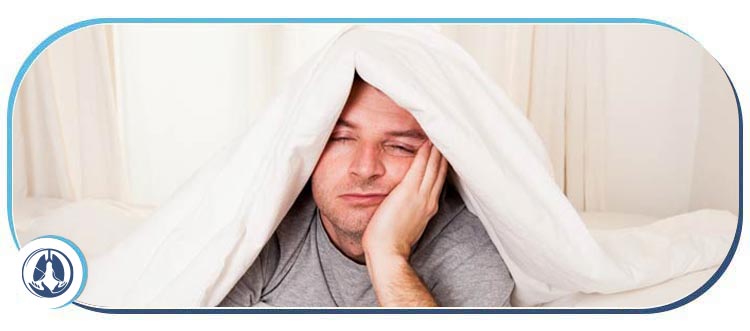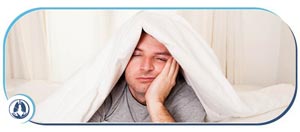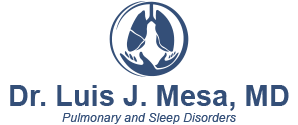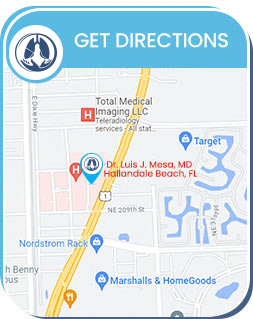Sleep Apnea Treatment Specialist in Hallandale Beach, FL
About 30 million people in the United States have sleep apnea, but only 6 million are diagnosed with the condition. Sleep apnea disrupts your sleep and can ruin your daily activities. Many people suffer from sleep apnea – you are not alone! There are treatments available for sleep apnea! It’s time to get a good night’s rest! Visit Dr. Luis J. Mesa, MD, and our team of healthcare professionals today. Contact us for more information or schedule an appointment online. We are conveniently located at 1250 E Hallandale Beach Blvd Suite 205 A, Hallandale Beach, FL 33009.


Table of Contents:
What is sleep apnea?
Are there different types of sleep apnea?
What are the symptoms of sleep apnea?
Are you at risk for sleep apnea?
How is sleep apnea treated?
Sleep apnea is a sleeping disorder characterized by frequent awakenings, prompted by repeated pauses in breathing. There are three types of sleep apnea: obstructive, central, and complex, a combination of the first two types. You may be awakened anywhere from a few to thirty times in an hour, though you won’t remember it in the morning.
It is estimated that approximately 85% of Americans with sleep apnea don’t know they have it. In the United States, the recorded prevalence of obstructive sleep apnea is around 10%, while the prevalence of central sleep apnea is less than 1%.
The three types of sleep apnea are obstructive, central, and complex. The difference that defines these types of sleep apnea is how and why it is happening. With obstructive sleep apnea, the muscles in the throat controlling the movement of the tongue, soft palate, uvula, tonsils, and throat walls relax, narrowing the airway. After the airway has been obstructed for some time, and your blood oxygen level decreases, your brain will cause you to arouse slightly from your sleep to open the airway again. In central sleep apnea, the airway remains unobstructed, though the electrical signals from the brain do not effectively deliver to the respiratory muscles, and breathing does not occur.
Again, after some time has passed and your body notices a decrease in oxygenation, you will wake up briefly and begin to breathe. Complex sleep apnea syndrome sometimes referred to as treatment-emergent central sleep apnea, is seen when both obstructive and central sleep apnea occurs.
Patients with sleep apnea are often unaware of their recurrent awakenings, and the condition can go undiagnosed for a long time. The chief complaint that typically signals a problem is unrelenting fatigue during the daytime, despite getting adequate sleep. This drowsiness is termed hypersomnia. Frequently, patients will be alerted to the problem by a significant other or family member, being told they are a loud snorer, gasp or choke in their sleep, or have pauses in their breathing cycle.
While snoring and choking can be seen in both types of sleep apnea, it is more common in obstructive sleep apnea. Upon awakening, you may also notice a dry mouth and lips or a headache. In addition, throughout the day, you may feel irritable or have difficulty paying attention. If any of these symptoms are similar to your experience, book an appointment now online or by phone to speak to Dr. Luis J. Mesa, MD, to discuss the possibility of sleep apnea. At Dr. Mesa’s pulmonary and sleep disorder clinic, we offer many diagnostic and treatment services and are dedicated to delivering quality and accessible health care to you.
Many risk factors are associated with obstructive sleep apnea, though few are noted with central sleep apnea. However, in both cases, men are approximately three times more likely to have sleep apnea, and the risk increases with age. Also, smoking causes an inflammatory response in the body and can promote fluid retention, making smokers three times more likely to have sleep apnea. In obstructive sleep apnea, obesity, and a large neck circumference can put you at higher risk because the airway is likely to be narrower. A family history of sleep apnea raises your chances of developing it, though the condition is not genetically influenced.
The use of alcohol, tranquilizers, or sedatives will result in a further relaxation of the muscles in the throat and can cause obstruction. In women, hormonal imbalances, polycystic ovarian syndrome (PCOS), and menopause can also contribute to risk severity. Medical conditions of the heart, chronic illnesses that affect the cardiopulmonary system, and Parkinson’s may also increase your chances of developing obstructive sleep apnea.
Central sleep apnea, heart disorders, or previous stroke history heightens the risk. Finally, narcotics can negatively impact the communication between the brain and the respiratory system, resulting in central sleep apnea.
To treat sleep apnea appropriately, you must first determine which type of sleep apnea is present. Your doctor may send you home with a portable monitor that allows you to test your sleep in the comfort of your own bed rather than at a sleep clinic. Unfortunately, at-home sleep tests can be inconclusive, and you may need to do nocturnal polysomnography anyway.
Nocturnal polysomnography is a procedure that monitors your heart, lungs, breathing pattern, blood oxygen levels, and brain activity while you sleep. This test can effectively distinguish between the three types of sleep apnea. If it is determined you have obstructive sleep apnea, you may be referred to an ENT, an ear, nose, and throat doctor, to rule out actual blockages in the airway. If you are diagnosed with central sleep apnea, you may be referred to a cardiologist or neurologist for further testing to pinpoint a root cause. If the underlying cause is treatable, a care plan is made to focus on that leading cause. Otherwise, there are various therapeutic and surgical treatments for sleep apnea.
CPAP machines are commonly used by patients with moderate to severe sleep apnea. They work by establishing a continuous positive airway pressure, which keeps your upper airways open and delivers low-flow oxygen. Other machines with a similar approach, such as the BPAP (bilevel positive airway pressure), can also be used to optimize comfort.
A newly approved device called adaptive servo-ventilation (ASV) uses a computer to vary pressure and level your breathing. Though ASV is not an appropriate treatment for patients with central sleep apnea or advanced heart failure, it is more effective than the CPAP machine. Oral appliances and supplemental oxygen can also be helpful. Among surgical options, radiofrequency ablation can be used to shrink the throat’s obstructive tissues and brings less risk for complication than complete tissue removal.
Jaw repositioning and implants in the soft palate are also options, however, their results are unreliable. If sleep apnea is life-threatening and is not helped by any of the above treatments, a tracheostomy may be considered, in which an artificial airway is created in the neck.
At Dr. Luis J. Mesa’s pulmonary and sleep disorder clinic, we are eager to answer all of your questions and ease your concerns with an official diagnosis. In addition, we strive to collaborate with you and your medical care team to provide personalized care and proper treatment. We serve patients from Hallandale Beach FL, Aventura FL, Hollywood FL, Golden Glades FL, Miramar FL, Hialeah FL, Fort Lauderdale FL, and BEYOND.

Additional Services You May Need
▸ General Pulmonary Medicine + Pleural Disease
▸ Sleep Medicine
▸ Internal Medicine
▸ Critical Care Medicine
▸ Telemedicine
▸ Pulmonologist
▸ Sleep Disorder Treatment
▸ Obstructive Sleep Apnea (OSA) Treatment
▸ Asthma Specialist






